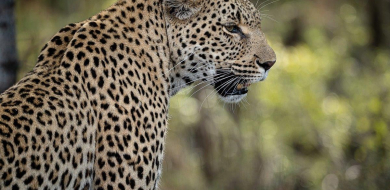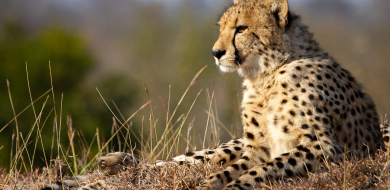“Landing” The Woodland Kingfisher
on Dec 17, 2014With the first of the summer rains we see many changes in the African bushveld, but probably one of the most exciting is the return of the summer migrant birds. Overnight the reserve becomes a hive of activity. What always amazes me is how quickly it happens and also how the birds reappear on almost the same date, year after year. The rangers always take bets on who will most closely predict when the first Woodland Kingfisher will arrive. It is normally around the 6th of November, but can be as late as the 16th. Once these kingfishers arrive it is officially summer at Sabi Sabi, and the bush comes alive with its distinctive melodious call and flashes of bright turquoise streaking across the landscape.

Every year I aim to try and capture an image of one of these beautiful birds in flight, but before I know it summer is over and they are on their way back up Africa. This year I was lucky. While traveling between lodges I saw a kingfisher perched in the fork of a tree, close to the ground. I noticed that there was a hole close to where the kingfisher was sitting, so kept a mental note of the location and thought that I would check it out the next time I had an opportunity. Well, it rained for the next few days so I had no luck. Finally the rain stopped; it was an afternoon with cloud and a bit of sunlight, and I had some time off. I sat watching the hole for an hour or so and yes, there was indeed a nest. I tried in vain a couple of times to get a photo of the birds in flight but they were just too quick.
I left that afternoon, disappointed but determined. I returned a day or two later with a bit more time in hand before the sun set. I positioned myself at a new angle and thought things through. I noticed that the birds were feeding the chicks every 20 minutes or so and always returned to the same branch before diving into the nest. Auto-focus was not going to work here, so I took the camera off auto and onto manual and focused on a spot on the tree that would be very close to the bird's approach. I would need as much speed and depth as I could get and also a high ISO. I set this to 3200. I now had a speed of between 1/2500 and 1/3200 - so really fast. Because of the dark shaded background I knew that the bird, being bright and white, would be overexposed; so I under exposed by a full stop; -1. I wanted as much depth as I could get while still keeping the speed up. The reason for the depth was to try and ensure that the full bird was in focus. For this I used F8. Now it was just a matter of time and lots of frames to get the image I wanted.
Well, it eventually took every afternoon for 3 days in a row, and the taking of hundreds of pictures. The birds move so quickly that I would only get 1, maybe 2 frames with a bird in them, even with my camera set at 11 frames a second. I eventually learnt that with one eye I should watch the bird land on its perch, and as soon as it jumped off the perch I should put the trigger down and snap some 15 to 20 pictures. Then I just had to hope that the angle was correct, and that the light at that moment was just right. Well, here is the end result.
Happy snapping
Rod Wyndham






